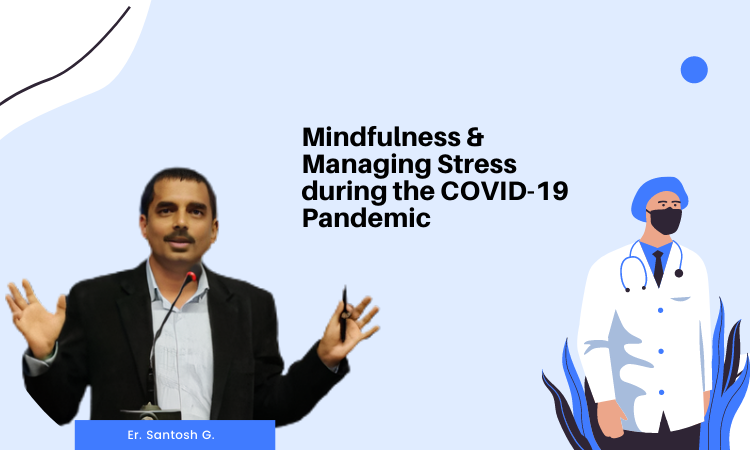
Since the day India declared a three-week complete lockdown to combat the deadly SARS COV-2 virus. In Bengaluru, I am at home. ‘Stay at home’, ‘Don’t touch something when you go out’, ‘Don’t shake hands’, ‘Wash your hands regularly’, and so on are some of the constant broadcasts on any TV channel. The situation is becoming increasingly concerning as the world has lost thousands of lives to date; however, India is believed to be in 2 wave of the pandemic. It’s been a particularly trying time for people like me to sit at home and watch the deadly scenario unfold. It’s as if you’re running from a mass murderer outside. ‘If the enemy is invisible, better cover,’ as Chanakya wisely advised.
As of today, the deadly Covid-19 second wave has wreaked havoc on India’s major cities, including Delhi, Mumbai, Lucknow, and Pune. Hospitals and crematoriums are at capacity, so funerals are being held in parking lots. However, the pandemic has now engulfed many smaller cities, towns, and villages, with the resulting destruction largely unreported.
The effects of coronavirus disease 2019 (COVID-19) on mental health and well-being are likely to be significant and long-lasting, and to affect people who are not directly infected by the virus. It is unknown, however, who will be affected and to what degree such consequences will be generalised across all facets of mental health.
‘Facts reduce fear.’
Above all, we must rely on reliable sources for information. The COVID-19 answer has a recurring message for dealing with fear: Get truth. Fear is reduced by facts.
With headlines blaring around us, news outlets striving to be first to break news, and our social media accounts isolating us, there’s a chance of an infodemic, in which disinformation spreads.
I was almost panicked about the whole thing at first. I attempted to work from home and became engrossed in a never-ending cycle of reading various news stories. I began to feel a little panicked.
Knowing accurate truth, communicating with people I trust, and grounding myself in prayer (Maha Mrityunjaya Mantra) were the three things that kept me grounded. I’ve learned to refrain from reading newspaper headlines. I’ve made an effort to be selective with what I read.
I had a brief conversation with colleague Ms. Kusum Kanwar about a week ago. During our conversation, she clarified how she is transitioning from her school business to a “Mindfulness Expert.” I had a wonderful time discovering something new and interesting.
I’m attempting to write this blog on “Mindfulness & Stress Management During the COVID-19 Pandemic” today.
Mindfulness
- the quality or state of being conscious or aware of something.
- a mental state achieved by focusing one’s awareness on the present moment, while calmly acknowledging and accepting one’s feelings, thoughts, and bodily sensations, used as a therapeutic technique.
We can all promote mindfulness by paying attention to our present-moment experiences, which include our body sensations, feelings, and thoughts. Some encounters are enjoyable, whereas others are uncomfortable, even painful. Mindfulness helps us to practise smarter, more humane ways of relating to our life experience rather than responding (such as catastrophizing) to what we experience.
During the current pandemic, there is a great deal of uncertainty about the future, as well as numerous threats to our survival (physical, social, emotional, and financial). Anxiety, anxiety, and frustration are completely natural and common feelings. You might also feel resentment or dissatisfaction toward our government institutions for not moving as quickly and effectively as you had hoped, or toward people who are not being as cautious as you would like in terms of social distance, and so on. All of these are common and natural responses to an unusual circumstance.
Mindfulness will help us understand this condition without being overwhelmed by intense feelings, helping us to return to a state of focused calm. And then will we be able to see clearly what we have power over and what we do not. Mindfulness also teaches us how to move forward with respect for ourselves and others.
Cultivating Mindfulness
Mindfulness can be practised in both formal and informal settings. But first, let’s go over the philosophical basis of every practise:
- Non-judgmentalism
- Perseverance (things take time)
- The mind of a beginner (instead of assuming to already know something)
- Faith (believing in one’s own inner resource, despite the fact that we can’t see it)
- Non-aggressive (instead of trying to achieve a goal no matter what)
- Acceptance (accepting what is)
- Learning to let go (letting go of what we wish to be)
- Compassion for others (see suffering and bringing kindness to it)
Mindful meditations, which can be led or performed in silence, are a formal way of cultivating mindfulness. Sit quietly for a few minutes to 30-40 minutes, becoming mindful of breath and body sensations, as well as sounds, feelings, and emotions, in a nonjudgmental and compassionate manner. There are numerous free guided meditations available on the internet.
Mindfulness can be practised in an informal way during the day by actually paying attention to whatever you are doing. There are many opportunities available. Brushing your teeth mindfully, feeling any sensations a toothbrush has on your teeth or gums, or smelling toothpaste are only a few examples. Other examples include mindfully washing dishes while noting the temperature of the water, the physical feeling of your hands on the dishes, and the sounds of the dishwasher; and mindfully walking while noticing the sensations of your feet hitting and leaving the ground. These are the polar opposites of how we frequently live our lives: mindlessly, with our bodies going through the motions on autopilot while our minds are preoccupied with worries.
Mindfulness Tool Box
There are some basic techniques you can use when your mind is hijacked by intense emotions or tension. Simple exercises include noticing the pulse, noticing the sensations of in- and out-breath in the body, and anchoring yourself to the present moment with both breath and body.
A couple of acronym-based activities are mentioned below.
1) S.T.O.P. (Stop, To breathe, Observe & Proceed): Take a breath, and observe what is happening inside you, noting your emotions and thoughts in this moment and acknowledge their presence. With gentle awareness of such presence, proceed.
2) R. A. I. N. (Recognize, Allow, Investigate & Nourish): Recognize what is here, allow it rather than fighting against it or pushing it away, then investigate where in the body you are experiencing this difficulty, and soothe and nourish yourself.
Take a deep breath. Literally. Feel a little better?
These are difficult times, but integrating mindful activities into your everyday routine will help you relax and develop healthy coping skills. Our therapists provide some advice on how to make mindfulness work for you and your family.
It doesn’t have to be difficult.
It’s just what it sounds like: being mindful. Taking the time to reflect on the present moment, being aware of where you are and how you are feeling. Trying to be present and focus your thoughts. It may seem easy, but it requires effort, particularly now, when concerns about the future are so pressing. Mindful practises may be beneficial. It isn’t difficult to practise mindfulness.
Here are some simple activities recommends:
- Squeeze Muscles: Starting at your toes, pick one muscle and squeeze it tight. Count to five. Release, and notice how your body changes. Repeat exercise moving up your body.
- Belly Breathing: Put one hand on your stomach and one hand on your chest. Slowly breathe in from your stomach (expand like a balloon) and slowly breathe out (deflate).
- Mindful Meal: Pay attention to the smell, taste and look of your food. No multitasking.
- Meditation: Sit in a relaxed, comfortable position. Pick something to focus on, like your breath. When your mind wanders, bring your attention back to your breath.
- Blowing Bubbles: Notice their shapes, textures and colors.
- Coloring: Color something. Focus on the colors and designs.
- Listening to Music: Focus on the whole song, or listen specifically to the voice or an instrument.
Make time for mindfulness
Most of the personal time that used to be part of our everyday lives — commuting, alone time at home, going to the store — is currently unavailable. As a result, it’s even more important to be deliberate about carving out time to recharge. Making the decision to set aside time each day to engage in mindful practises is a good place to start. “Before everyone else wakes up, the morning can be a wonderful time to really ground yourself.” Mindfulness in the morning will help to set the mood for the rest of the day. Deep breathing, meditation, exercise, or whatever mindfulness practise you choose are all good options. Mindfulness doesn’t have to be complicated: “With a cup of coffee, try mindful eating or mindful drinking.” Only sit there and be present in the moment. That is what mindfulness is all about. Taking five minutes to do that before the day starts is much more important now because this isn’t our usual routine and we’ll feel out of sorts.”
Limit multi-tasking
Right now, it can seem that attempting to do ten things at once is the only way to get something done. For example, try folding laundry, cooking dinner, and keeping an eye on your child while on a work call.
Multitasking is rarely successful and can potentially increase stress levels. Multitasking is an urban legend. Instead, set daily targets and try to concentrate on one thing at a time. Consider arranging job calls during naptime, giving kids a little extra screen time as you prepare dinner, or enlisting the help of older children to fold the laundry while you clean up.
Practice mindfulness as a family
Anything that encourages people to take a moment to calm down, be present, and come together is a good thing. Setting aside time as a family to engage in mindful activities will make everyone feel less stressed. It might be a regular family yoga session or a group walk in the woods, focusing on the way the air sounds, the sound of the birds, and the scent of the forest. Over dinner, another good family mindfulness idea is to have everyone share one good thing they learned or saw that day.
Make peace with uncertainty
This is a case in which there is a great deal of confusion. We have no idea what will happen, how long it will last, or how things will be after it is done. We do know, however, that thinking about it would have little impact on the result. Learning to cope with uncertainty is an important part of developing healthy coping skills for ourselves, which we want to pass on to our children. It’s all too tempting right now to let your mind race with the terrifying possibilities. “Mindfulness practise brings one back to the present moment and away from the edge.”






